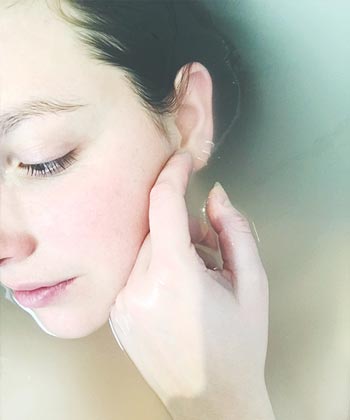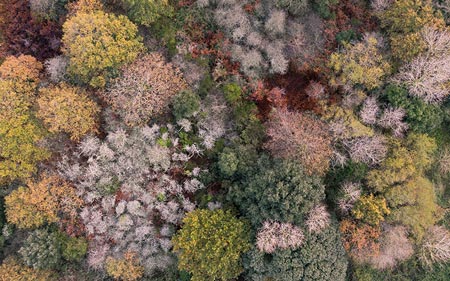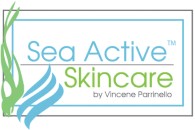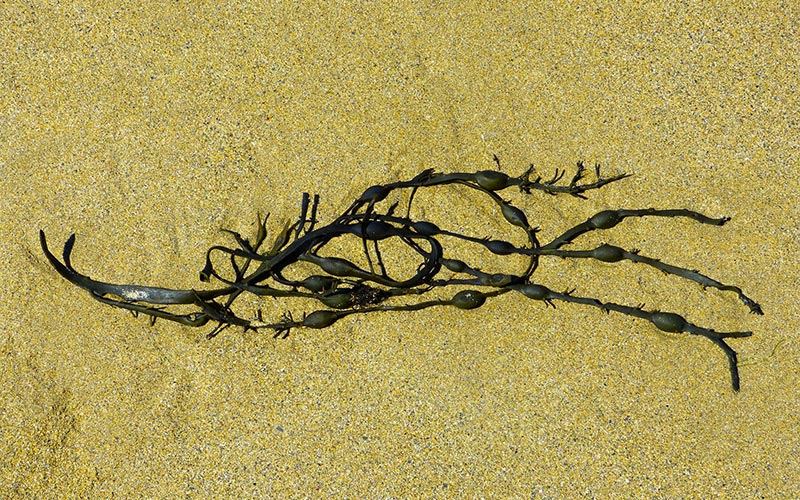Seventy percent of the Earth is made up of water, and the inhabitants of the ocean, specifically seaweed, and algae, contribute around 50 to 85% of the oxygen in the Earth’s atmosphere.
For thousands of years, people believed that going to the ocean is good for the health. There has been much research about Thalassotherapy, the term used for ocean-based health therapies over the past 200 years. Ocean water, algae, ocean mud, and marine minerals have been used to treat rheumatism, arthritis, joint troubles, and injuries, and to repair, hydrate, soothe and regenerate skin cells.
Algaes and seaweeds are the ancestors of land plants. Algae refer to different types of organisms that are found in the ocean. Algae fall into three large varieties: green algae, red algae, and brown algae.
Algaes don’t have roots, and they use a special holdfast to anchor themselves to rocks and then rise in the water to get the nutrients they need. For most people, seaweeds can be unpleasant, especially while swimming in the ocean or maintaining footing while scrambling on rocks. When seaweed is detached, they end up washing ashore and form smelly decomposing piles.
The life cycle of seaweeds is similar to that of land plants. In the spring, they start to bloom and grow in large varieties and colors. In the fall, they fade and die, while winter storms leave them as compost on our beaches.
Seaweed vs. Land Plants
- Although land plants provide several benefits to the skin, seaweed offers:
- more vitamins, minerals, and salts
- more vitamins A, E, C, and folic acid
- B-complex vitamins, including B12, in better quality
- natural iodine
- Unique compounds of laminarin, alginate, and fucoidan that are not found in land plants
- unsaturated fats
- all the essential amino acids
- less risk of contracting allergies
The Benefits of Seaweed
Seaweed is rich in vitamins A, B1, B2, B6, B12, C, E, K, folic acid, alginate, polysaccharides, and niacin. They are also an essential supply of 60 trace elements and an excellent source of over 12 minerals.
Their benefits of seaweeds are also varied. According to research from Kyoto University, the fibers from brown seaweed can lower blood pressure and lessen the risk of cardiovascular disease. Inhabitants of Japan’s Okinawa Island, where the highest number of centenarians in the world reside, eat seaweed every day.

Seaweeds have also been used for centuries to heal wounds, reduce bruising, and relieve skin conditions such as eczema, rosacea, and sunburn.
Similar to land plants, each variety of seaweed has its unique properties and benefits. Like land plants, they are also categorized into family groups.
Benefits of Specific Types of Seaweed
The Great Brown Kelps
These types of seaweeds, also called Phaeophyta Seaweeds, flourish along the coastline, where they trap and manufacture vitamins, minerals, proteins, and essential amino acids. They restore the body with these minerals while promoting perspiration to stimulate metabolism, thus making them excellent detoxifiers!
Kelps can speed up the phase by which body cells replace themselves. In other words, they slow down the aging process and wrinkle formation. They enhance circulation and blood flow, provide nutritive support, combat stress, and promote overall wellness.
Great brown kelps are highly-mineralized plants. They store minerals from the ocean and concentrate them on their plant structures. These kelps provide the minerals that can promote the unloading of toxic substances and assist other nutrients to be utilized and transported to cells. These types of seaweed can detoxify, act as an antioxidant, antiseptic, antifungal, antibacterial, and antiviral, and nourish, heal, stimulate, revitalize, tone, protect, rehydrate.

Here are types of Brown Seaweed commonly used in skincare products:
Alaria (Wakame) contains antifungal, antioxidant, anti-inflammatory, calming, and firming properties, and stimulates collagen production as well. It moisturizes, detoxifies, firms and maintains skin elasticity.
Laminaria (Sugar Kelp) has an outer covering with a composition similar to our outermost layer of skin. It has marine sugars, amino acids, minerals, trace elements, and other essential components for moisturizing. It contains antifungal, antioxidant, anti-inflammatory, calming, and firming properties, and produces collagen.
The Vital Reds
These seaweeds, also called Rhodophyta Seaweeds, get their distinctive red-purplish color from a pigment called phycoerythrin. Not only are they antioxidants, but Red Seaweeds are also filled with amino acids, Vitamin A, C, zinc, fatty acids, polysaccharides, beta-carotene, iron, calcium, magnesium, sodium and trace minerals.
These types of seaweed contain antibacterial, antiviral, antifungal, anti-inflammatory, and yeast-inhibiting properties. They also nourish, moisturize, and speed up the healing of wounds.
Here are some of the Red Seaweed commonly used in many skincare products: Asparagopsis Armata lives only 50cm under the water surface and is exposed to surface bacteria and heat.
Condus Crispus is a type of algae abundant in amino and fatty acids. An oily extract of this algae moisturizes and deeply nourishes the skin.
Corallina Officinalis is rich in marine calcium and is 100 times more effective than mineral calcium. It boosts cellular respiration, increases skin’s resilience, and restores radiance.
Delesseria Sanguinea is a unique algae that contains anti-inflammatory properties and provides drainage action on skin tissue. It is exceptional in treating dark under-eye circles. Dilsea Carnosa is Highly effective in repairing collagen and elastin, and the reduction of wrinkle depth.
Furellaria Lumbricalis can produce a hydrating compound that has a faster and more powerful hydrating plumping effect than hyaluronic acid.
Porphyra Conchocelis secretes an acid that can exfoliate the skin. These natural marine AHA’s have a high skin tolerance while ensuring maximum effectiveness.
The Lush Greens
These seaweeds, also called Chlorophyta Seaweeds, have a forest-green color that comes from two chlorophylls that are of high quality. These are loaded with vitamins and minerals and promote the production of collagen and elastin and healthy mucus membranes.
The chlorophyll helps in the prevention of wrinkles, skin aging, and boosts protein synthesis and cell regeneration. They contain astringent, toning, oxygenating, antibacterial, and cleansing properties and stimulates the production of collagen and elastin, while providing a cooling effect and UV protection.

A Green Seaweed that is beneficial to skincare is the Chlorella Vulgaris, which contains high amounts of peptides and amino acids that are naturally present in the dermis. It is used for firming and toning the skin.
Processing Seaweed for Successful Skin Treatments
Similar to land plants, seaweeds must be processed to protect their vital nutrients to make it more effective as a skin treatment. A lot of seaweed brands use seaweed extracts that lose their nutrients during processing.
Here at Sea Active Skincare, we offer organic skincare masterfully blended with sea plants and synchronized hydration with plant-based humectants and emollients to ensure you get radiant and healthier appearing skin. To see a complete list of the products we offer, please feel free to visit our website today at https://seaactiveskincare.com/.

